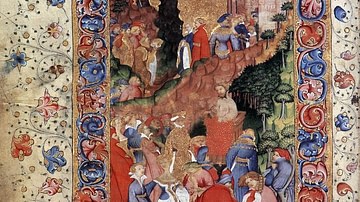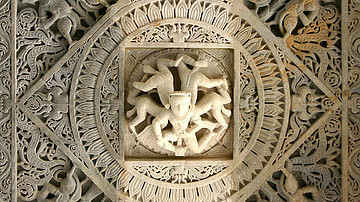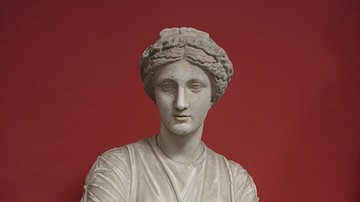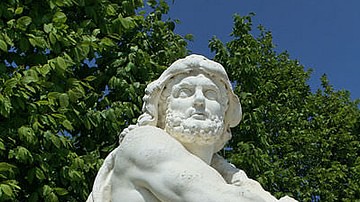Video
by Exambin
published on 22 September 2020
Welcome back to the 7th lesson in Indian history in which you will see about Jainism indian history/ jainism lecture for upsc, which we hope is usefull for your jainism and buddhism upsc exams, Certain questions have been asked about buddhism upsc.
JAINISM
Origin of Jainism:
• In ancient history of India There were 24 Tirthankaras The first was Rishabhanath and the last was Vardhamana Mahavira,
• Parshvanatha 23rd Tirthankara was a historical figure and flourished 250 yrs before Mahavira. He was a prince who abandoned the throne and led the life of an ascetic
• Teachings of jainism Parsvanatha: Ahimsa which means Non-injury, Satya is for Non-lying, Asteya for Non-stealing, and Aparigraha: Non-possession.
• It is believed that the Jainism existed centuries ago and was revived by Mahavira.
Causes for the Rise of Jainism:
• Division of society in 4 Varna’s i.e segment ( Brahmins, Kshatriyas, Vaishyas, and Shudras)
• Desires of Vaishyas to improve social status.
• Reaction of Kshatriyas to Brahmins supremacy in Hindu
• New agricultural economy
• The reaction of commoners
lord Mahavira He was born to father Siddhartha head of Jnatrika Clan and mother Trishla who is the sister of Lichchhavi chief Chetaka.
How did Mahavira gained the Supreme Knowledge (keval gyan):
• He was educated in all branches of knowledge
• At the age of 30 after the death of his parents, he renounced his family, became an
• In the 13th year of asceticism, on the 10th day of Vaisakha, outside the town of Jimbhikagrama Mahavira attained the Supreme knowledge.
Jain Tirthankaras – Symbols and Instruments of Knowledge:
The symbol for the 1st Jain Tirthankar Rishabhanatha (Adinatha) is bull
The 23rd Jain Tirthankar Parshvanatha has a snake as symbol and the last
Jain Tirthankar Mahavir has Lion as a symbol
Five instruments of knowledge are:
"Mati Jnana" - Perception through activity of sense organs,
"Shruta Jnana" - Knowledge revealed by scriptures,
"Avadhi Jnana" - Clairvoyant perception,
"Manahparyaya Jnana" - Telepathic knowledge and
"Keval Jnana" - Temporal knowledge or Omniscience.
Teachings of Mahavira:
The teachings of Jain tirthankaras are compiled in 12 Angas @ Vallabhi
The Principles of Jainism can be summed up as:
1. Mahavira rejected Vedas and Vedic rituals.
2. Mahavira did not believe in the existence of God. He said that Universe is the product of nature which was the outcome of cause and effect. The Man is the architect of his own destiny.
3. Mahavira believed in “karma” and transmigration of the soul (Atma).. On good or bad karmas, the soul creates its own present or future. The body dies, but the soul is immortal.
4. Jains lay great emphasis on Equality.man may be good or bad according to his karma and not on his birth.
5. Jiva acts, feels and wills. It suffers and dies. Atma is eternal and is born and reborn
Triratnas of Jainism:
1. Full Knowledge
2. Action
3. Liberation
Main principles and Essence of Jainism are:
1. Non-violence which is termed as ahimsa
2. anekāntavāda:
3. Non-attachment which is termed as aparigraha
4. Satya, 'truth'
5. Asteya, 'not stealing':
6. Brahmacharya
Sections of Jainism:
Shwetambara (white-clad) is a term describing its ascetic’s practice of wearing white clothes. Digambara (sky-clad) Jain’s is a term describing its ascetics practice do not wear any clothesAccording to Digambar tradition, Mahavira, the last Jain Tirthankara, never married.
The Digambars believe that after attaining enlightenment, Mahavira was free from human activities like hunger, thirst, and sleep.
Spread of Jainism
• Used prakrit (common language) for preaching instead of sanskrit
• Jain followers led by Chandragupta Maurya & Bhadrabahu left for south (Karnataka) Immigrants spread Jainism in south India.
• 1st Jain council was held at Pataliputra led by Sthalbahu in the beginning of 3rd century BC & 2nd Jain council was held at Valabhi in 5th century BC where 12 Anagas of Swetambars were finally compiled
• Jainism has between four and five million followers, with most Jains residing in India.
• Outside India, some of the largest Jain communities are present in Canada, Europe, Kenya, the United Kingdom, Hong Kong, Suriname, Fiji, and the United States
Decline of Jainism
• No strong patronage from the royal families to continue the religion with the exception of North India Bimbisara, Aiathasatru, Chandragupta Maurya, Bindusara, Kharavela and Gangs dynasty, Kadambs dynasty, Amogavarsha, Siddhraj Jai Singh, and Kum Arapala in South India
Contribution of Jainism:1st serious attempt to mitigate the evils of Varna system and the ritualistic Vedic religion.Out of Suraseni Prakrit, Marathi language grew.
License & Copyright
Original video by Exambin. Embedded by Ibolya Horváth, published on 22 September 2020. Please check the original source(s) for copyright information. Please note that content linked from this page may have different licensing terms.
The video and its description text are provided by Youtube. This website claims no authorship of this content; we are republishing it for educational purposes.
Cite This Work
APA Style
Exambin. (2020, September 22). Buddhism and Jainism - Part 2 Jainism.
World History Encyclopedia. Retrieved from https://www.worldhistory.org/video/2130/buddhism-and-jainism---part-2-jainism/
Chicago Style
Exambin. "Buddhism and Jainism - Part 2 Jainism."
World History Encyclopedia. Last modified September 22, 2020.
https://www.worldhistory.org/video/2130/buddhism-and-jainism---part-2-jainism/.





